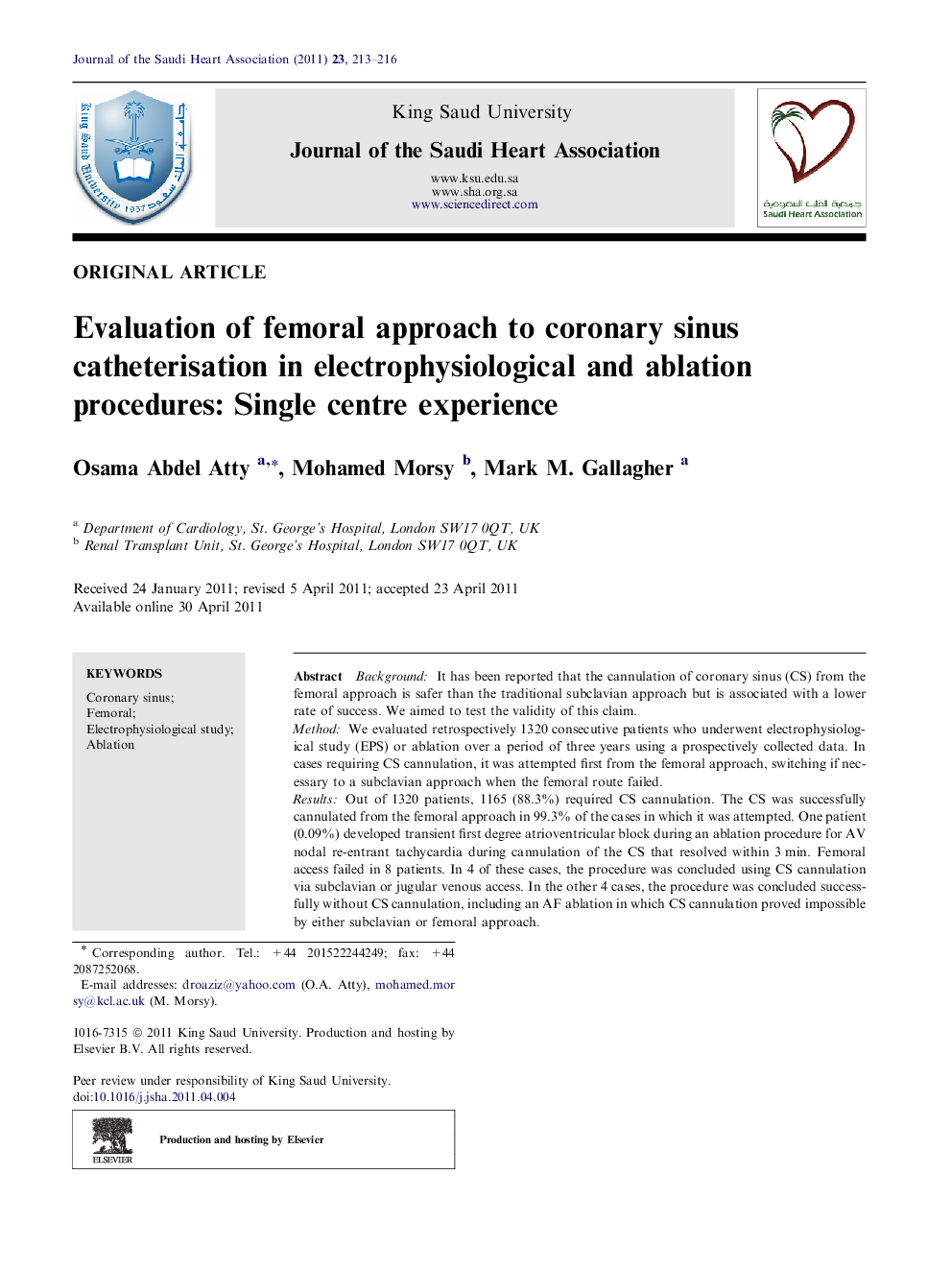| Article ID | Journal | Published Year | Pages | File Type |
|---|---|---|---|---|
| 2978455 | Journal of the Saudi Heart Association | 2011 | 4 Pages |
BackgroundIt has been reported that the cannulation of coronary sinus (CS) from the femoral approach is safer than the traditional subclavian approach but is associated with a lower rate of success. We aimed to test the validity of this claim.MethodWe evaluated retrospectively 1320 consecutive patients who underwent electrophysiological study (EPS) or ablation over a period of three years using a prospectively collected data. In cases requiring CS cannulation, it was attempted first from the femoral approach, switching if necessary to a subclavian approach when the femoral route failed.ResultsOut of 1320 patients, 1165 (88.3%) required CS cannulation. The CS was successfully cannulated from the femoral approach in 99.3% of the cases in which it was attempted. One patient (0.09%) developed transient first degree atrioventricular block during an ablation procedure for AV nodal re-entrant tachycardia during cannulation of the CS that resolved within 3 min. Femoral access failed in 8 patients. In 4 of these cases, the procedure was concluded using CS cannulation via subclavian or jugular venous access. In the other 4 cases, the procedure was concluded successfully without CS cannulation, including an AF ablation in which CS cannulation proved impossible by either subclavian or femoral approach.ConclusionFemoral access can be used for CS cannulation with a high rate of procedural success in the vast majority of patients undergoing EPS and ablation. This approach is safe, and associated with a high rate of procedural success.
